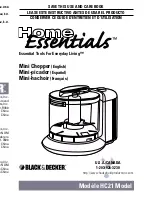
CHAPTER 15 |
94
MONITOR OUTPUT MENU
Loudness Menu
Speaker calibration, which is covered in greater detail later in this manual, is normally done at relatively high
volume levels in order to provide adequate gain into the mic to overcome room noise. Normal listening levels may
be substantially lower. While the EQ curve of the output of the speakers technically remains the same, the way our
ears perceive different frequencies at lower sound levels will cause the audio to sound different. Specifically, lower
and higher frequencies will sound softer than mid-range frequencies.
Do not be alarmed if you find you need to add several decibels of low-frequency boost (at a very low frequency and
a width of 3.0 octaves or so) in order for the bass to sound balanced at lower volumes. The same is true for higher
frequencies, but normally a dB or two is sufficient (perhaps at a very high frequency with a width of 2.0 octaves or
so).
♦
The
Frequency, Width,
and
Gain
sliders operate in the same manner as their counterparts in other
sections of the Omnia.7 in which a parametric equalizer is offered.
♦
The
Band Min
slider sets the point at which any equalization established by the Frequency, Width, and
Gain sliders are begins to take place.
♦
The
Band Max
slider sets the point at which the maximum amount of equalization is reached.
If the
Gain
slider is set to 0dB and the
Band Min
and
Band Max
sliders are set to the same value, the
equalizers in the Loudness menu can be used as additional “static” EQ bands if, for whatever reason, more
bands are needed.
Left EQ and Right EQ Menus
These menus provide six bands of fully parametric equalization per channel for each Monitor Output.
♦
The
Frequency, Width,
and
Gain
sliders operate in the same manner as their counterparts in other
sections of the Omnia.7 in which a parametric equalizer is offered.
♦
The
Copy
control places the settings the equalizer onto a “clipboard” so that they can be shared in the
opposite channel EQ by using the
Paste
control. This is especially handy if your left and right speakers
require nearly - but not quite - identical equalization.
















































